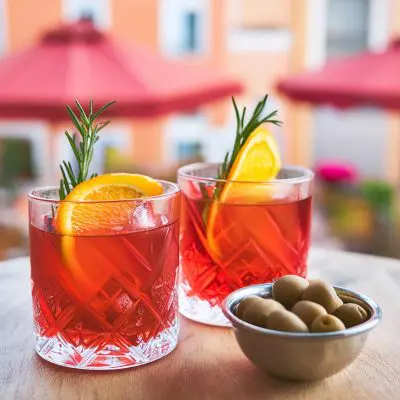Best Vermouths for Negroni: Expert Recommendations & Tasting Notes
Jump to:
The Negroni cocktail has been winning hearts globally for over a century, becoming a cherished classic the world over. Choosing the best vermouth for Negroni recipes is key to crafting this aperitivo clinker to perfection. In this guide, we’ll explore the captivating world of vermouth, helping you to stir up a Negroni that’s always on point.
What is vermouth?

Vermouth is a fortified and aromatized wine enriched with deeply flavorful botanicals, including herbs, spices, and roots. Originating in Italy during the 18th century, it quickly became a favorite in cocktail culture. The versatility of vermouth allows it to be enjoyed on its own or as a crucial component in many classic cocktails.
History and role in cocktails

Originally crafted as a medicinal tonic, vermouth has evolved into a beloved aperitif and cocktail ingredient. These days, Cinzano stands as one of the world’s most recognizable vermouth brands. Giovanni and Carlo Cinzano, master Italian distillers, first introduced their range of vermouths in 1757. Yet, the history of vermouth predates even this.
Legend has it that Hippocrates, the famous physician, was the first to infuse wine with wormwood and other spices, using it as a healing tonic. However, many credit Italian distiller Antonio Benedetto Carpano as the official inventor of vermouth. In 1786, Carpano crafted a unique vermouth in Turin by combining white wine with herbs and spices, paving the way for over 30 varieties of modern vermouth.
Vermouth ultimately gained prominence in iconic cocktails such as the Martini, Manhattan, and, of course, the Negroni. Today, the unique blend of botanicals in vermouth is revered for adding complexity and depth to a variety of amazing drinks, making it indispensable in DIY and professional mixology.
DID YOU KNOW? The name vermouth comes from the French pronunciation of wermut, the German word for wormwood.
Sweet vs. dry vermouth
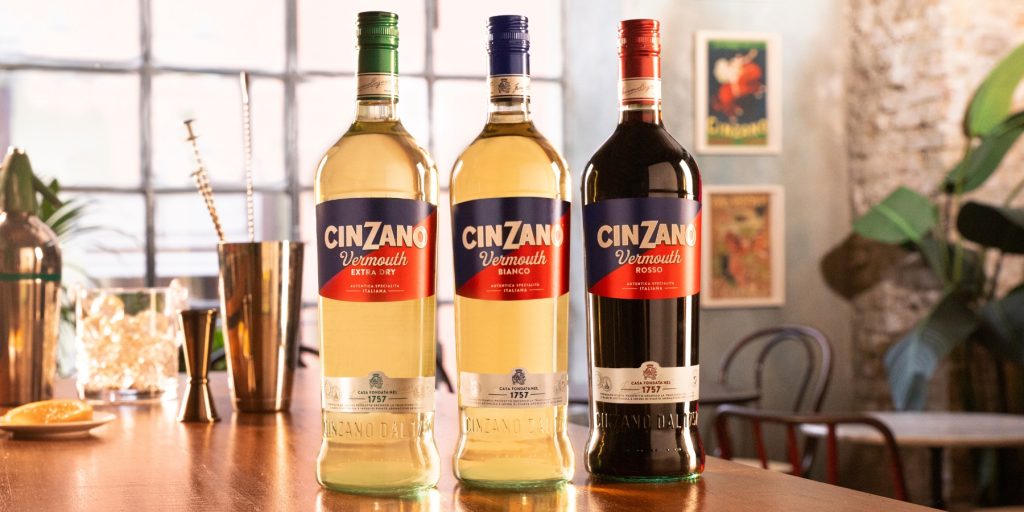
Vermouth comes in two main varieties: sweet and dry. Sweet vermouth, often called red or Italian vermouth, is richer and has a balance of sweetness and bitterness. It’s essential for cocktails like the Negroni and Manhattan, where its complex flavors harmonize perfectly with gin and Campari.
Dry vermouth, on the other hand, is lighter and more herbal, and is often referred to as French vermouth, and typically used in drinks like the classic Martini. However, for a Negroni, sweet vermouth is the preferred option, providing the necessary depth and sweetness to complement the other ingredients.
Also see: 15 Cocktails with Vermouth for Sophisticated Sipping
Top vermouths for a Negroni
Cinzano, a name synonymous with quality and tradition, offers an inspired spectrum of vermouths that cater to diverse tastes and preferences. These are our go-to Negroni vermouth recommendations:
1757 Vermouth di Torino Rosso

1757 Vermouth di Torino G.I. Rosso is arguably the best sweet vermouth for a Negroni. It celebrates a harmonious blend of flavors, embodying a sweet, aromatic richness that strikes a perfectly poised balance. Crafted in adherence to Piedmont tradition, this vermouth exemplifies meticulous artistry.
- Color: Reddish-brown with amber reflections
- Nose: A complex aroma of spiced wood and root notes, intertwined with vanilla, dried fruits, and delicate floral hints of wormwood.
- Taste: Each sip reveals dried fig, spices, and wood, culminating in subtle vanilla notes and a long, bittersweet finish reminiscent of warm amber resin.
Cinzano Vermouth Rosso
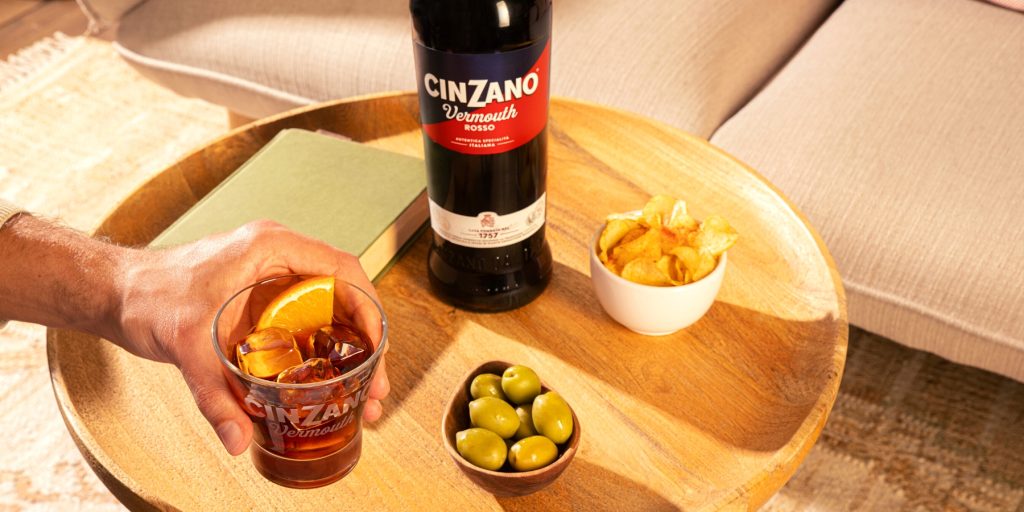
Another strong contender in the race for the best red vermouth for a Negroni, Cinzano Vermouth Rosso ignited a legacy with its rich, aromatic blend. It captivates with centuries-old flavors, crafted from the finest red vermouth ingredients and a curated selection of herbs and spices.
- Color: Rich amber
- Nose: Aromatic notes of vanilla, black cherry, and subtle creamy caramel.
- Taste: Gentle sweetness transitions to layers of spices and balanced bitterness, culminating in a botanical finish dominated by distinctive wormwood notes.
Expert tips for making the perfect Negroni

- Always use Campari. Campari is a non-negotiable component of an authentic Negroni. Its unique blend of herbs and spices provides the perfect balance of bitterness and sweetness. No substitutions can replicate Campari’s distinct flavor, so make sure to always use the real deal for your Negroni.
- Use the best-quality gin you can find. Choose the finest quality gin for your Negroni. High-quality gin ensures a smooth and flavorful base for your cocktail, enhancing the overall drinking experience. Bulldog Gin is a great option for its crisp, juniper-forward profile
- Measure for accuracy. Precision is key to crafting the perfect Negroni. Use a 1 oz measure to ensure accuracy and follow the classic 1:1:1 ratio. This balance of equal parts Campari, gin, and sweet vermouth creates the ideal harmony of flavors in your drink.
- Stir to chill. Pour the Campari, gin, and vermouth into a rocks glass filled with ice. Stir the mixture for at least 30 seconds. This step ensures that the flavors meld together smoothly, resulting in a well-balanced Negroni.
- Add an orange twist. Finish your Negroni with a bright, aromatic touch. Squeeze an orange twist over the cocktail to release its essential oils, enhancing the drink’s aroma and flavor. Rub the twist along the rim of the glass before dropping it into the drink, adding a final layer of citrusy goodness.
Choosing the best gin for a Negroni is very important. Learn all about it here.
Negroni variations to try at home

If you love the bittersweet aperitif cocktail, the good news is that we have a lovely line-up of 20 Negroni variations to stir up at home. Here are a few of our favorites.
Also read: The Complete History of the Negroni
Negroni food pairing ideas
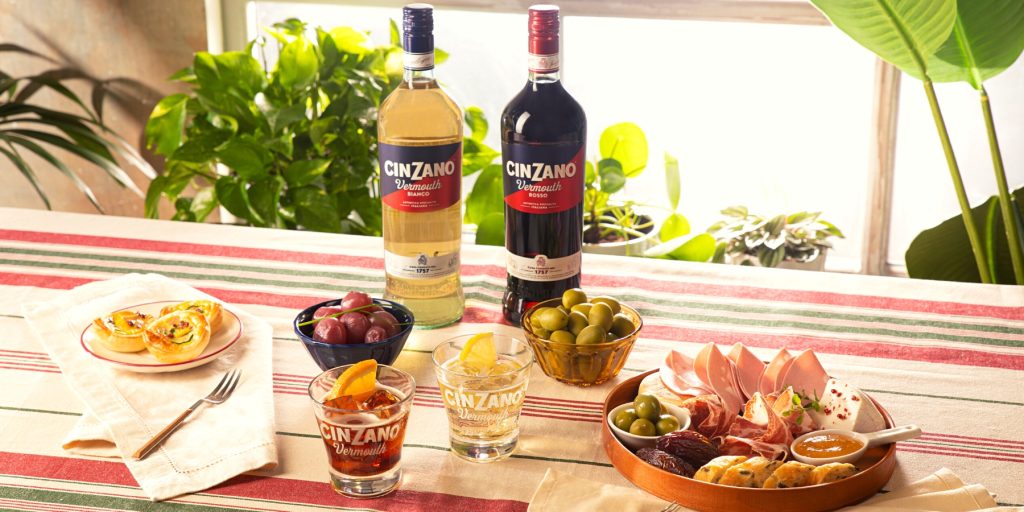
Experiment with the following pairings and recipes to find your perfect Negroni food match, setting the scene for a memorable dining and cocktail experience.
Appetizers that complement a Negroni

Pair your Negroni with a variety of appetizers to enhance its bold flavors. For a classic option, try serving prosciutto-wrapped melon or bruschetta with fresh tomatoes and basil. These Italian-inspired bites balance the bitterness of the Negroni with sweet and savory notes.
For vegan and vegetarian options, consider marinated olives, roasted nuts, or a colorful antipasto platter with artichokes, sun-dried tomatoes, and roasted red peppers. These choices offer a delightful contrast to the cocktail’s robust profile.
Main meals that pair well with a Negroni

For main courses, the Negroni pairs beautifully with rich, flavorful dishes. Think pasta with a hearty tomato sauce, grilled steak, or a classic Italian pizza with spicy sausage and caramelized onions. The cocktail’s bitterness cuts through the richness of these dishes, creating a harmonious dining experience.
Vegetarian and vegan meals can also shine alongside a Negroni. Try a mushroom risotto, eggplant parmesan, or a vegan lasagna packed with roasted vegetables. These meals offer depth and complexity that match the cocktail’s bold character.
Two quick pairings to try at home
Marinated olives
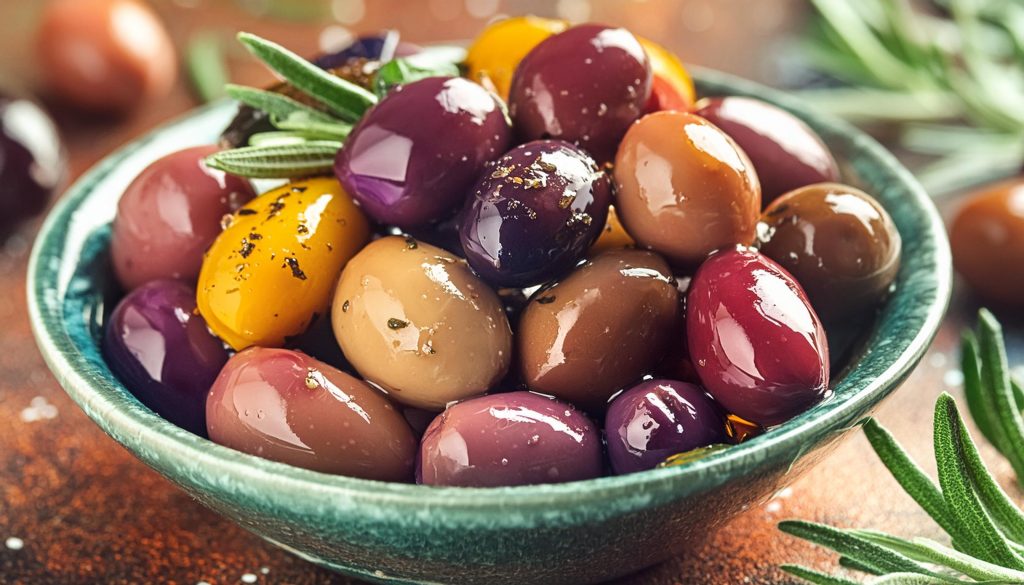
Briny olives highlight the Negroni’s herbal notes, creating a delightful flavor combination. For a quick appetizer, try this easy recipe:
Ingredients
- 2 cups drained mixed olives (green and black)
- 1/4 cup extra-virgin olive oil
- Zest of 1 lemon
- 2 cloves garlic, thinly sliced
- 1 tsp dried oregano
- 1 tsp crushed red pepper flakes
- Fresh herbs (such as rosemary and thyme), to taste
Method
- Combine the olives, olive oil, lemon zest, garlic, oregano, and red pepper flakes in a bowl.
- Add fresh herbs to taste.
- Let the mixture marinate for at least an hour (or ideally overnight) before serving.
Mushroom risotto
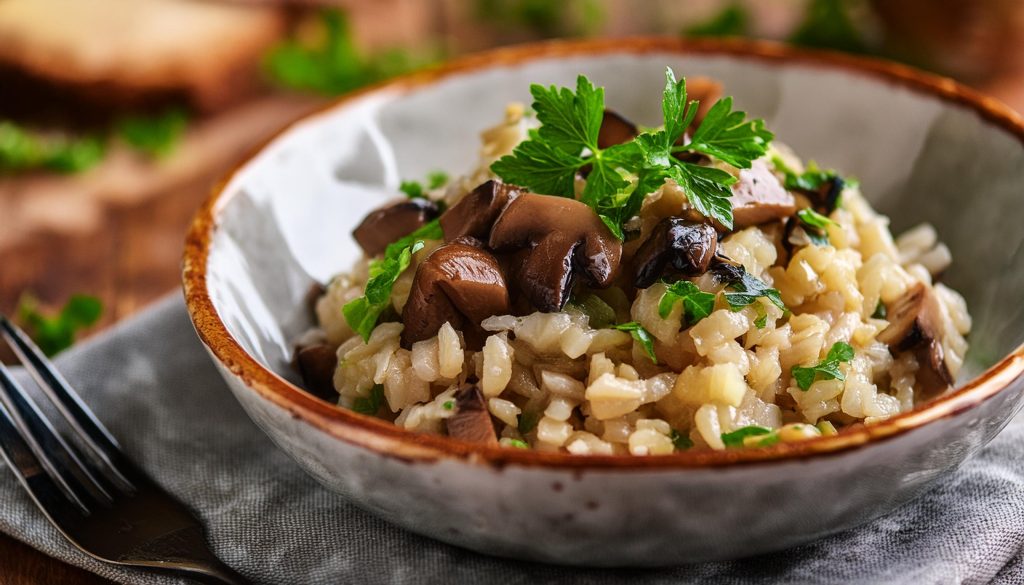
Earthy mushrooms and creamy risotto balance the Negroni’s bitterness, making each sip and bite more enjoyable.
Ingredients
- 2 tbsp olive oil
- 1 small onion, finely chopped
- 2 cloves garlic, minced
- 1 cup Arborio rice
- 4 cups vegetable broth, warmed
- 2 cups mushrooms, sliced (cremini or shiitake work well)
- 1/4 cup fresh parsley, chopped
- Juice of 1/2 lemon
- Salt and pepper, to taste
Method
- Heat the olive oil in a large pan over medium heat. Add the onions and garlic, and sauté until translucent, about 5 minutes.
- Add the Arborio rice and cook, stirring, until lightly toasted, about 2 minutes.
- Gradually add the warm vegetable broth, one ladle at a time, stirring frequently until the liquid is absorbed before adding more. Continue until the rice is creamy and tender, about 18-20 minutes.
- In a separate pan, sauté the sliced mushrooms until browned and tender, then stir them into the risotto.
- Stir in the fresh parsley, lemon juice, and season with salt and pepper to taste.
Expert insider tips

Tristram Fini, our friend from the Campari Academy UK, has shared a few valuable tips for folks who want to understand more about vermouth:
The impact of botanicals on vermouth flavor
Vermouth’s distinct flavor profile is primarily defined by its key botanical: wormwood. In fact, the term “vermouth” is derived from the Germanic word for wormwood. Due to its origins in the Savoy region, which spans parts of France and Italy, the French pronunciation of vermouth became prevalent when marketed as a bottled product in the 1780s.
In addition to wormwood, traditional botanicals like cassia, gentian, and juniper are essential. However, vanilla plays a pivotal role in enhancing vermouth’s complexity. Historically, during the 1780s, vermouth was referred to as “Vini di Lusso,” meaning “wines of luxury”. Importing exotic ingredients like vanilla, which did not grow locally, added a touch of luxury to the blend.
Today, vanilla is commonly featured in modern vermouth production, especially with the trend toward premiumization. Its inclusion, alongside traditional botanicals, adds a unique dimension to vermouth, making it a standout ingredient in cocktails.
How oxidation affects the taste of vermouth
Oxidation itself is a process that, at a structural level, involves the degradation of the wine within a product. In vermouth, which is fortified and aromatized, this process stabilizes the drink to some extent. Think of oxidation as a loss of freshness rather than outright spoilage.
When you first open a bottle of vermouth, it is bright and vibrant, showcasing citrus notes, intensity, and a lovely drive. Over time, however, the flavors will begin to dull. While it takes a while for vermouth to technically spoil, this depends on the producer, the fortification process, the amount of sugar present, and the style of the vermouth itself. Ultimately, it will start to taste flatter and flatter.
You can compare opening a bottle of vermouth to breaking a cinnamon stick in front of you while cooking. This action releases aromatic compounds into the atmosphere, resulting in that bright, fresh aroma—much like when you first open the vermouth. On the other hand, if you were to smell powdered cinnamon that had been sitting in your pantry for years, it would evoke memories of cinnamon but lack the vibrancy and complexity of its fresh counterpart.
Ultimately, it’s best to use vermouth in its freshest state to get the best out of your cocktails.
Balancing vermouth in cocktails
Start with templates of the classics. Cocktails like the Martini, Manhattan, Negroni, and even variations such as the Sherry Cobbler or Blood and Sand showcase how vermouth fits into a drink structurally. By examining these established recipes, you can adapt that same approach to your own creations.
If you find yourself leaning towards more intense flavors, consider how different vermouths are produced. Some vermouths have a more pronounced flavor profile, while others are more subtle. The key is moderating the amount you use in your cocktail to ensure a balanced combination that enhances rather than overwhelms the other ingredients.
There you have it – a quick introduction to vermouth, top tips on choosing the best vermouth for a Negroni, a tasty variety of Negroni variations to try at home, and some food pairings to round it all off! Sign up for our newsletter to get delicious hosting inspiration delivered straight to your inbox and remember to tag us when you share pictures of your Negroni on Instagram.
